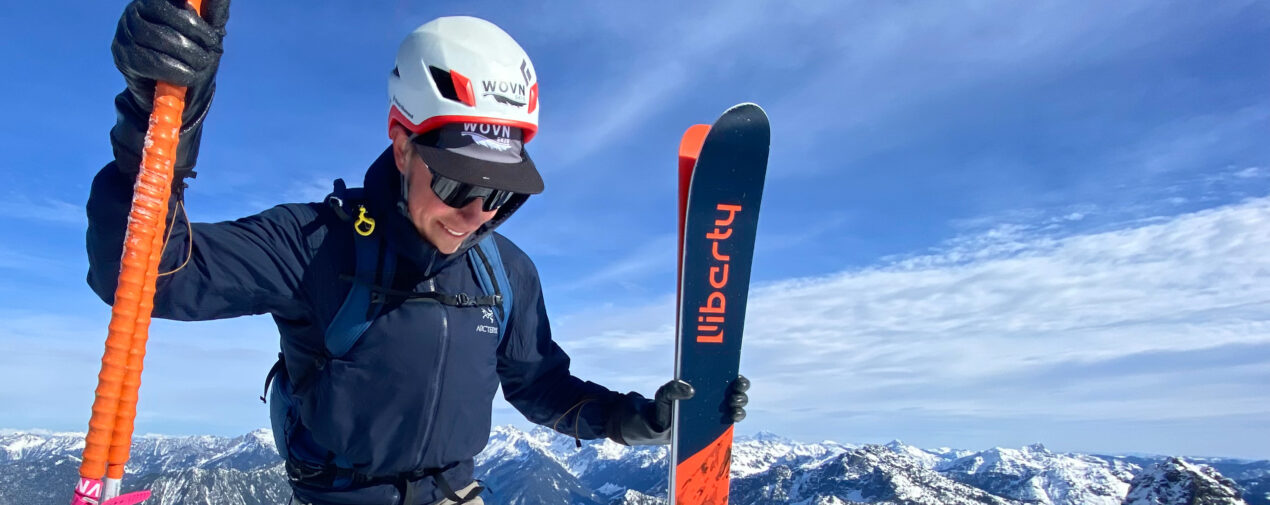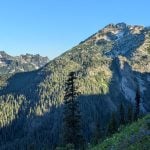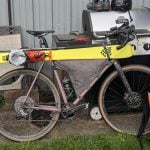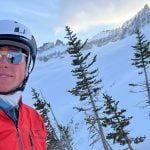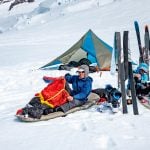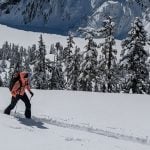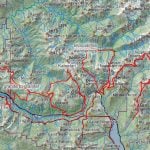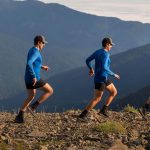ProView – Liberty Skis Origin 106 BC Review
The Liberty Origin 106 BC (‘Backcountry’) is a stiff and hard-charging ski. It comes to life in soft snow, where the stability of the ski provides a solid platform to rip through powder. The ski has interesting design characteristics, such as the mount point and early, yet very gradual, tip rise. The ski can be demanding at times and challenging in variable snow because of how stiff it is. Overall, I grew to like the Liberty Origin 106 BC throughout my testing and learned to adapt to its stiffness and unique flex profile.
Liberty Skis Origin 106 BC
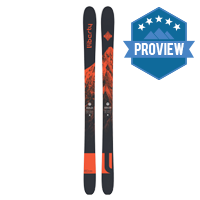
Product Name: Liberty Skis Origin 106 BC
Product Description: The Origin106 BC takes our legendary freeride design and combines it with the lightest materials to create the ski backcountry riders have been waiting for. Without compromising the all-mountain performance of the Origin design, we shaved off crucial grams with the use of an Aspen/carbon fiber core, partial metal edge, and a skin-friendly tail insert. Less tail rocker means more effective edge in critical terrain, the ability to create snow anchors, and better climbing skin compatibility. The Origin106 BC still carries its freeride heritage though, and has enough rocker to float, pivot and carve anywhere you have the legs to go. If you want a lightweight ski to get you to the furthest line, the Origin106 BC is your new ride.
Offer price: MSRP: $1075.00
-
Quality
(3)
-
Soft Snow Performance
(3)
-
Firm Snow Performance
(4)
-
Uphill Performance
(3)
Summary
The Liberty Origin 106 BC is a stiff, hard-charging ski that likes to go fast! It’s a great ski for ‘freeriders’ who are looking for stability at speed, landing jumps, and punching big lines.
Overall
3.3Pros
- Stiff and stable at speed
- 1600g is lightweight enough for long uphill days
Cons
- Flat topsheets can peel at the edges
- Stiff flex isn’t for everyone
- Little tip or tail rocker means it’s not the most floaty for soft snow
Initial Impressions
Late Tip Rocker / Long Effective Edge
The ski appears to have a very late tip rocker at first glance, with just the last few centimeters giving that typical ‘surfy’ rocker profile that I look for in a powder ski. However, upon further inspection, the rocker actually starts quite early in the ski; it just doesn’t become very prominent until the end of the ski.
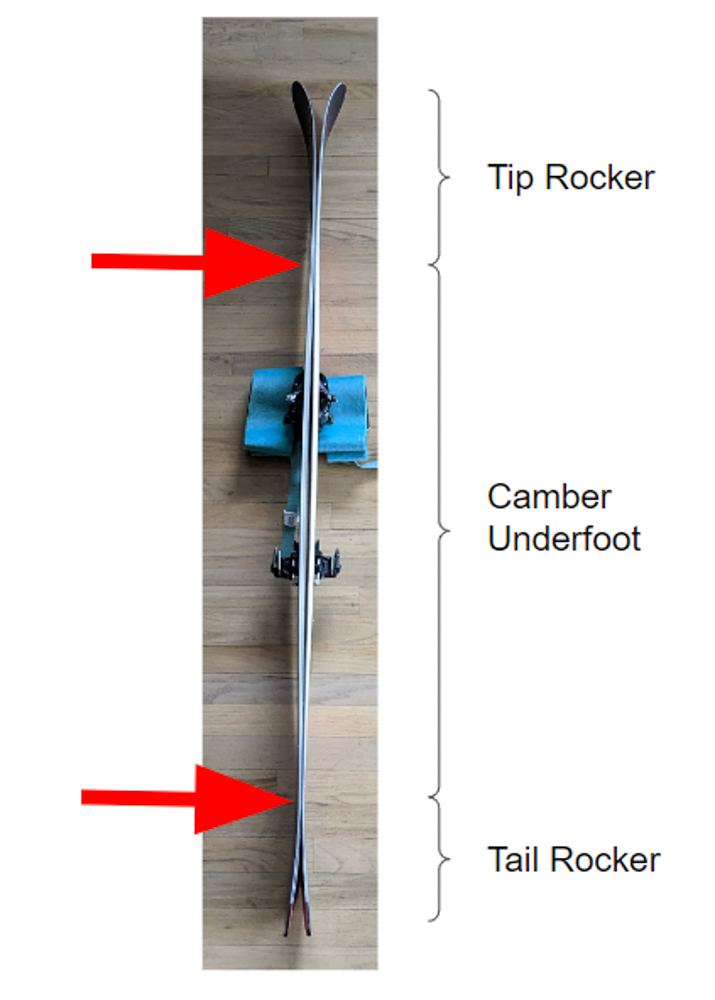
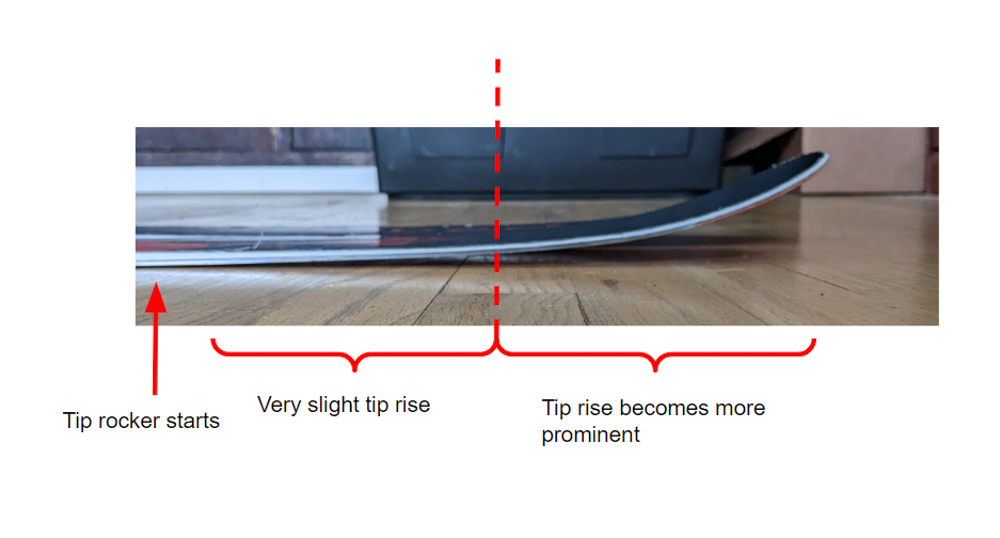
What does this mean? This is an ‘effectively long’ ski. Most powder skis feel shorter than their listed length because the tip and tail rocker floats in the snow and takes away from the ‘true’ length of the ski. The Liberty 106 BC, on the other hand, is ‘effectively long’; stated length is 182cm and it’s going to ski almost entirely that length.
Flat Tail with Tail Clip ‘Bumper’
I noticed that the tail of the Origin 106 BC was quite flat compared to other powder skis I have skied. This is typically a ‘hard snow’ characteristic, which surprised me in a ski claiming to be ‘powder focused’. I also noticed the ‘tail clip bumper’, which claims to improve climbing skin retention.
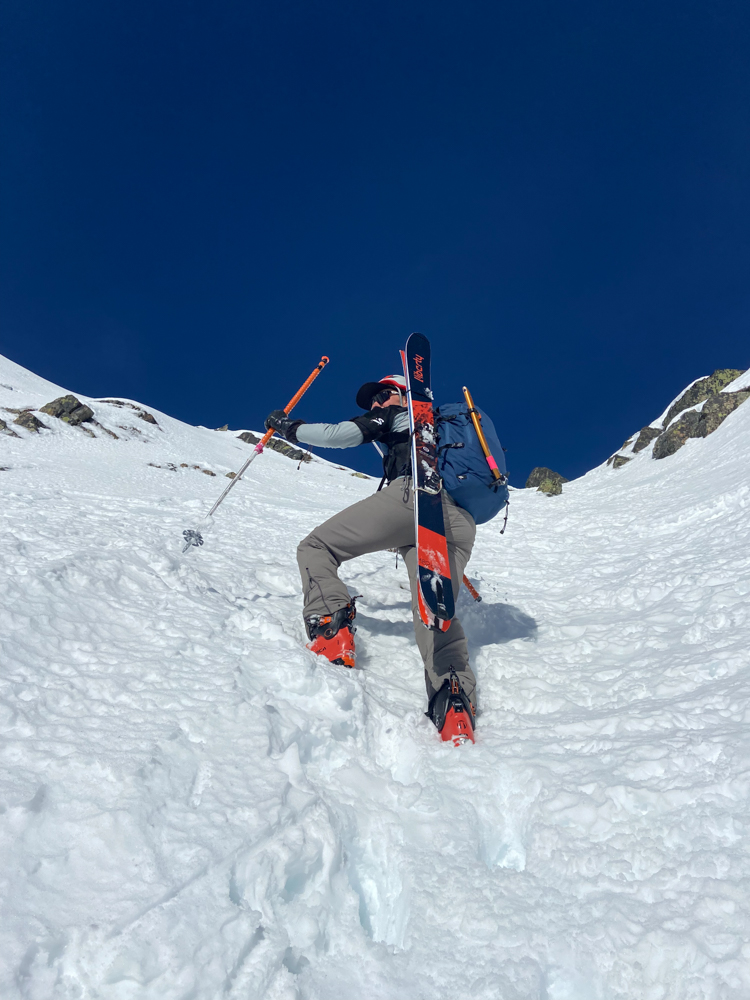
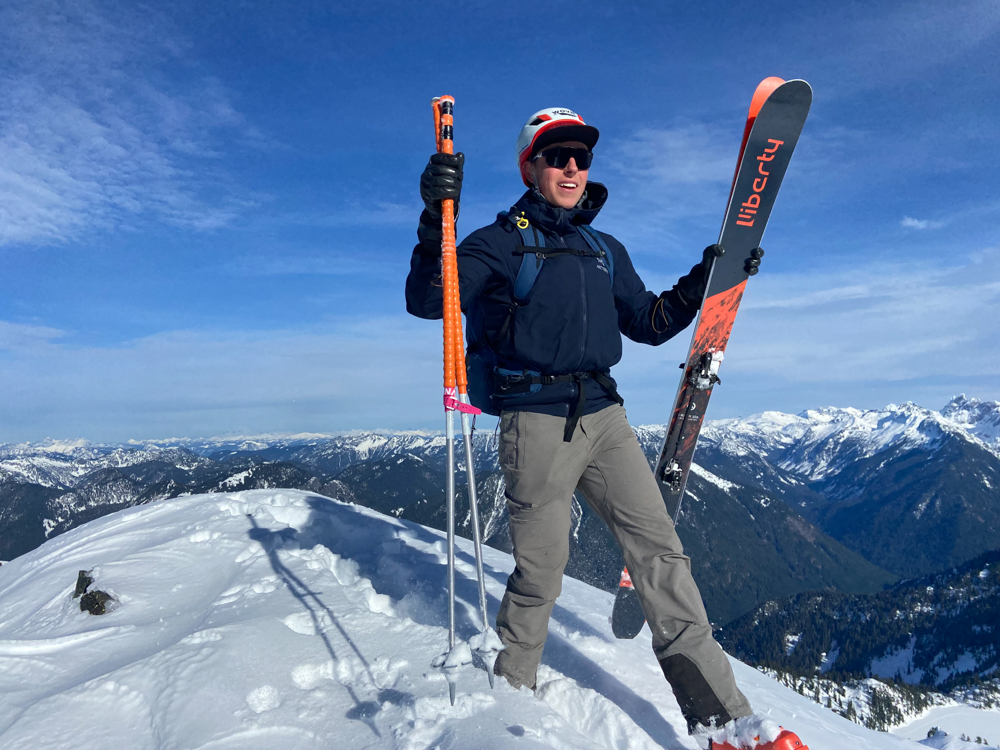
Nice Weight
The Origin 106 BC has a very appropriate weight to it, at a claimed weight of 1670 g/ski. This is enough heft to bump through some crud but not too heavy to tire you out on the uptrack. I started on lightweight skis in the 1300 – 1500 g range, but recently I’ve trended towards skis more in the 1600 – 1700 g category. This nails that.
Tech Specs & Comparisons
Below, I’ll list the Liberty Origin 106 BC specifications, along with comparisons to other skis I’ve skied (and a few that are popular amongst many skiers).
| Brand / Ski Model | Stated Length | ‘True’ Length | Claimed Weight | Measured Weight | Turn Radius |
| Liberty Origin 106 BC | 182 cm | 180 cm | 1670 g/ski | 1695 g/ski | 20 m |
| WOVN Rail 108 | 185 cm | 181 cm | 1740 g/ski | 1740 g/ski | 23 m |
| WOVN Harrier 108 | 185 cm | 181 cm | 1490 g/ski | 1453 g/ski | 23 m |
| Atomic Backland 107* | 182 cm | ** | 1590 g/ski | ** | 18.5 m |
| Blizzard ZeroG 105* | 180cm | ** | 1510 g/ski | ** | 23 m |
*Have not skied, just adding for comparison to other readers
**Measurements not taken
The Liberty Origin 106 BC uses an aspen wood core with carbon fiber layers to add stiffness. Aspen wood is lightweight and ‘energetic’, with very similar characteristics to poplar (for those who have skied on a poplar core). It’s not as light or ‘springy’ as Paulownia, for reference.
Liberty states an effective edge of 75%, which aligns with the long effective ski length I noted in my initial impression. The tip rocker profile is claimed at 20%, which is a bit deceiving since it’s such a gradual rocker until the very tip of the ski where it splays out more typically.
The tail rocker is claimed at 5%, which aligns with the flat tail profile I noted in my initial impression.
The biggest standout spec for me was the ‘recommended mount point’ of -8.25 cm. The ‘manufacturer’s recommendation’ is often to position the boot at the center of the camber and turn radius of the ski. The Liberty 106 BC is more ‘central’ than other powder skis I have skied, such as the WOVN Harrier 107 and the WOVN Rail Freetour 108, which have a mount point of -11 cm. What does this mean? The more ‘central’ your mount point, the less ski you have out in front of you. This translates to a ski that ‘swings’ easier between turns but might not be as ‘surfy’ in deep snow.
Test Setup & Conditions
I tested out the Liberty Origin 106 with Marker Alpinist 10 bindings using Contour skins. I live in the Pacific Northwest and primarily tour in the Snoqualmie Pass backcountry. I received the skis in the month of January 2023 and toured on the Origin 106 BC 10-12 days throughout January and February 2023.
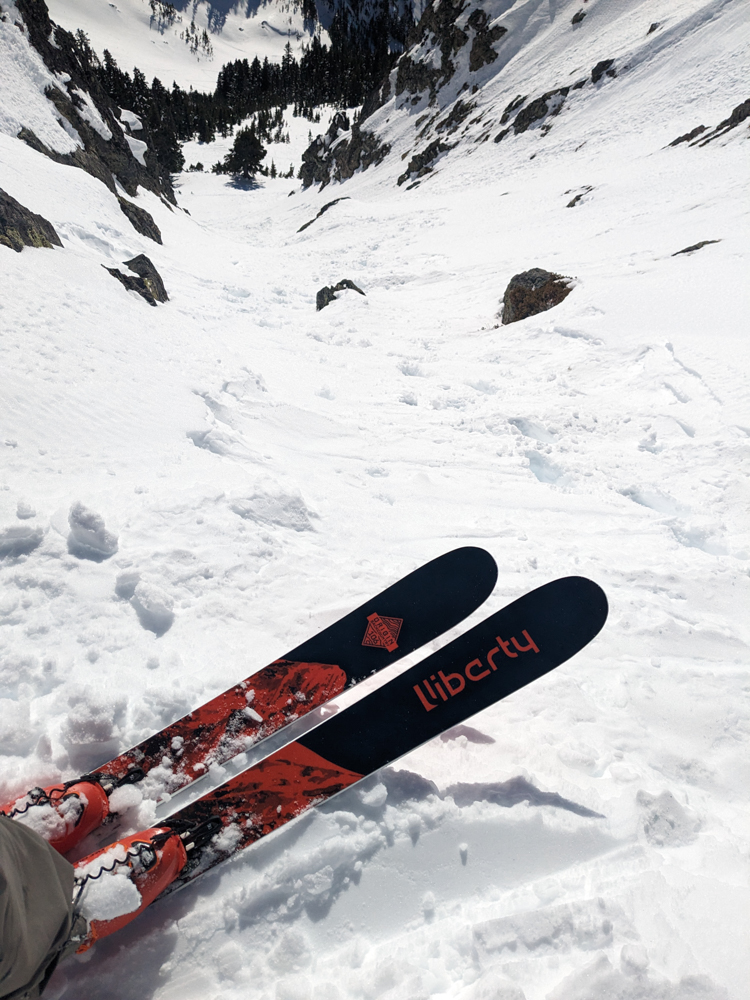
Conditions wise, I tested the Origin 106 BC in a full variety of conditions (which is typical here in the PNW). I got a few days of deep powder, a few days of variable trap crust, and a few days of wet sloppy snow. It was a great ‘buffet’ of snow conditions to really see how the Origin 106 BC performs.
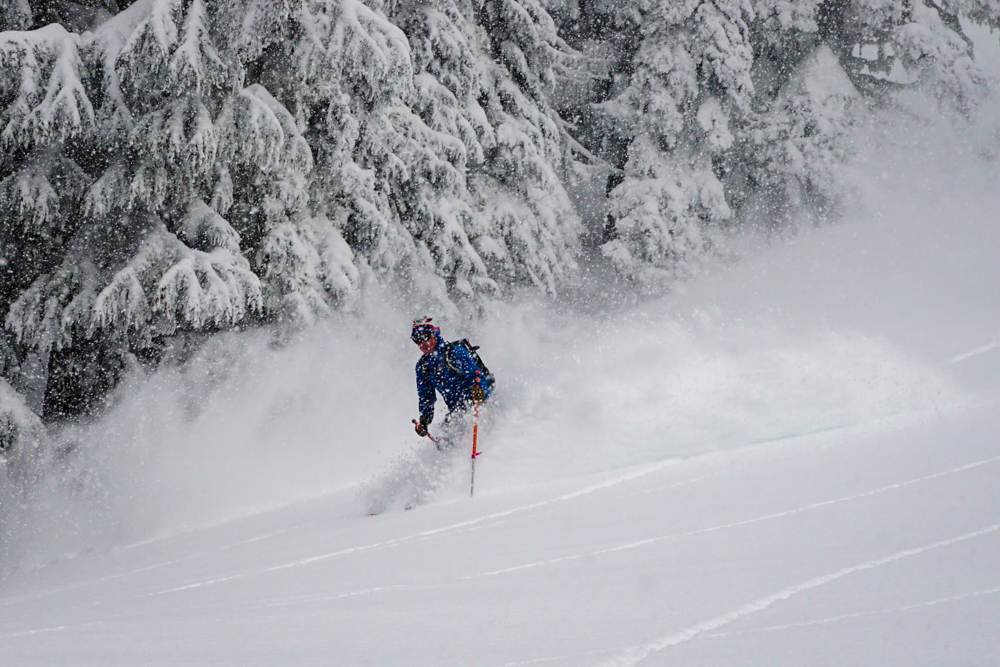
Most of my days involved steep skiing in couloirs, open faces, and at times steep trees. There were a few days when I skied the Origin 106 BC in mellow, hippy turn terrain … but for the most part it was steep narrow chutes.
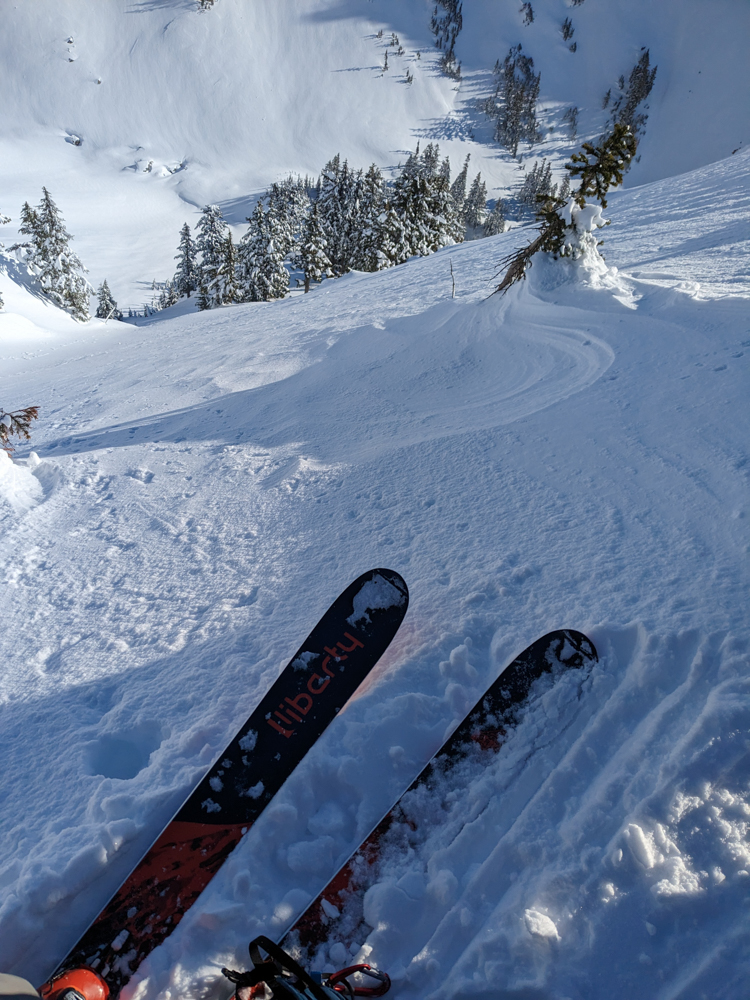
After Testing Impressions
Demanding Ski
My biggest takeaway with the Origin 106 is that it’s a ‘demanding ski’. What does that mean? You need to be on your game when you ski this ski. The flex profile is stiff, from tip-to-tail. There is little ‘softness’ in this ski to forgive you for sloppy form. I found the ski super fun, energetic, and ‘alive’ in soft snow … but put it on some wind board and man, it fights back.
The Origin 106 BC doesn’t have an easy/natural ‘release’/turn initiation like the Backland series from Atomic or the Harrier series from WOVN. You really need to lean into and drive the Origin 106 BC. It wants you to be flexing the front of the ski the whole time.
There are advantages to this kind of stiffness and ‘demand’: in firm conditions it has a consistent rebound and response. If you are in a tight couloir making steep jump turns, when you land on the Origin 106 BC it will be a consistent ‘plane’, with little flex underfoot. The edge hold on the Origin 106 is impressive and confidence inspiring.
Central Mounting Position
I really noticed the central mounting position as compared to my other skis (Harrier 108 & Rail 108 Freetour at -11 cm). The -8.25 cm mounting position felt much more forward, ‘swingy’, and was much easier to kick turn on the uptrack. Additionally, I felt more prone to leaning into the front of the ski, as compared to the WOVN Harrier 108 and Rail 108, where I felt inclined to let the ski run out ahead of me more and ride the full turn radius.
Flat Topsheet = Peeling
With any flat topsheet design, I did notice some peeling after kicking the skis together a few times to clear off snow. This isn’t a knock on Liberty, more just a note that any ski with a planar, flat topsheet construction is going to have some level of topsheet peeling on the edges. My WOVN Harrier 108 and Rail 108 do the same thing and there is nothing functionally, nor structurally, wrong with them. Just some aesthetic damage.
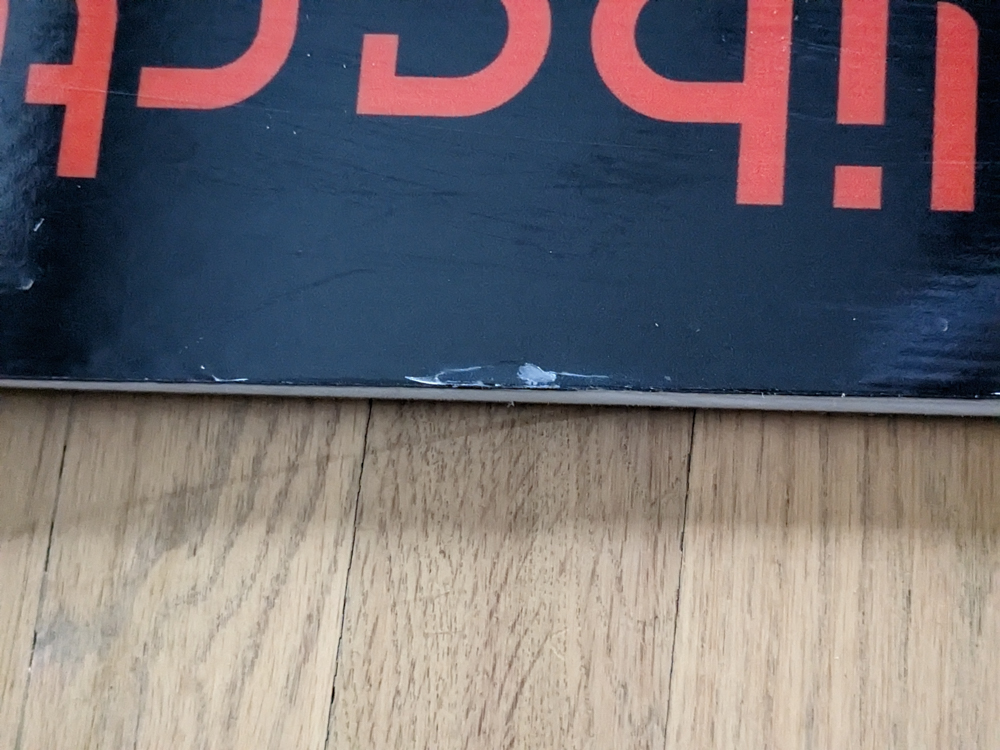
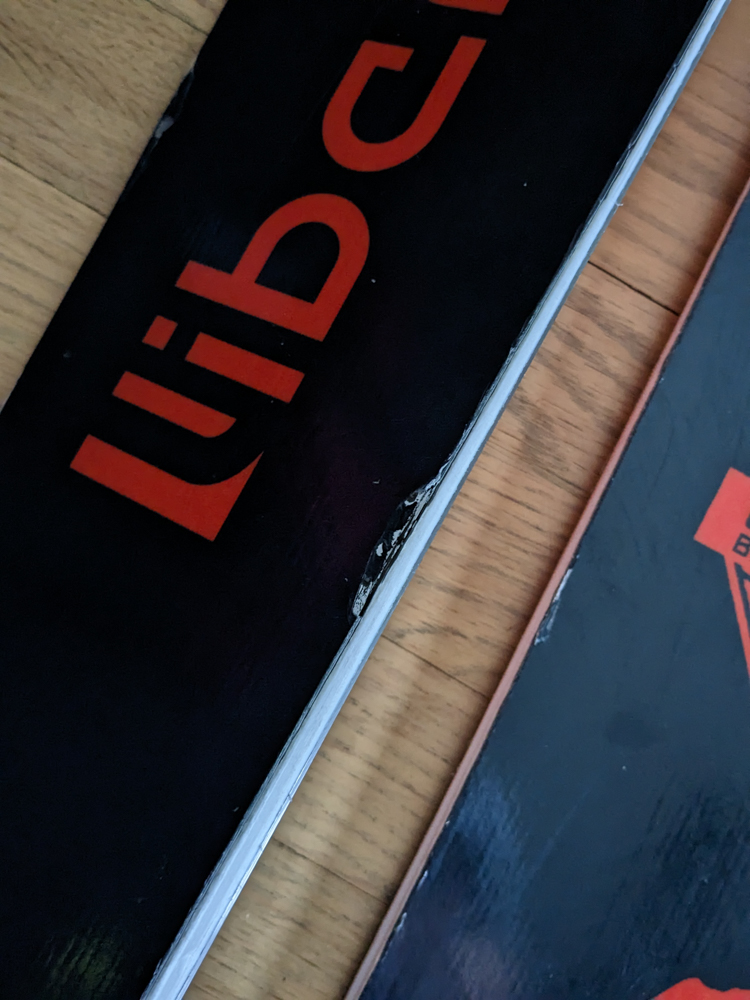
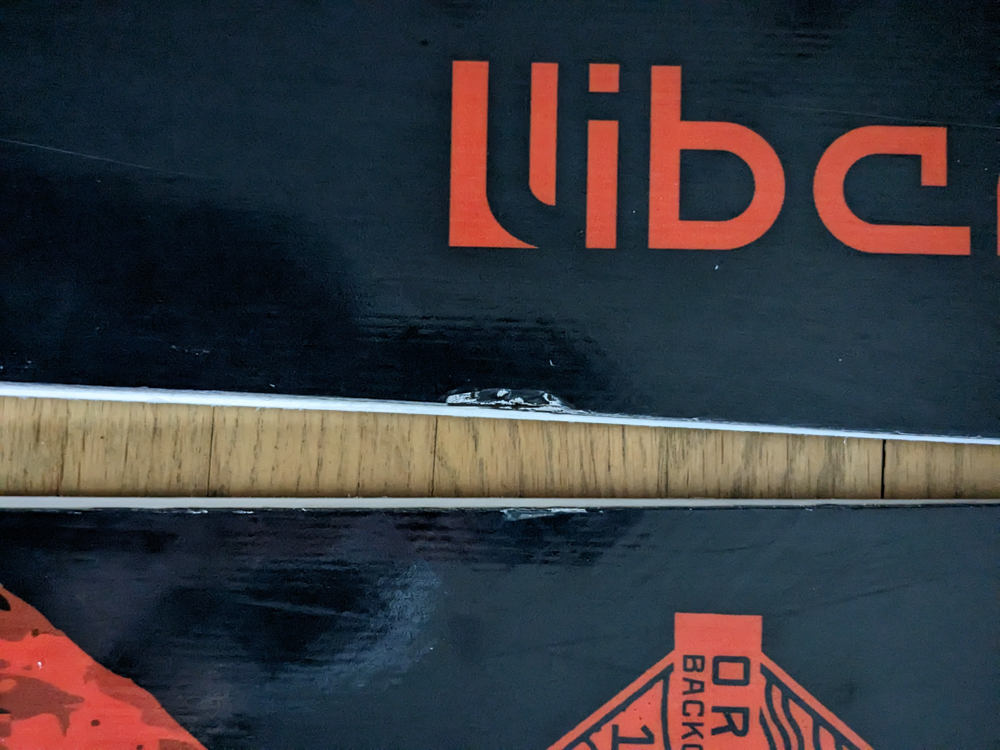
Dark Topsheet = Snow Buildup
With any dark topsheet, I noticed on sunny powder days the ski would have more snow sticking to the topsheets than lighter topsheets. Again, this is just a design choice made with the red and blue topsheet.
Who Is This Ski For?
The Origin 106 BC is a great ski for skiers who like to charge hard, push into the front of their ski, and enjoy a stiff and consistent flex pattern. Its stiffness and rigidity will favor freeride skiers who like jumps, slashes, and strong skiing. Its lightweight construction keeps it out of the full ‘freeride’ realm of 1800g+/ski, but it definitely has design elements of its heavier cousin, the Origin 106.
The Final Word
The Origin 106 BC isn’t my ‘quiver-of-one’ … but it is close. I’d like to see more softness and flex in the tip and tail rocker to make the release profile a bit more forgiving. I don’t jump cliffs or extreme jumps, so the torsional and linear stiffness from tip-to-tail is a bit overpowering in my application, in anything except nice soft snow. The Origin 106 BC will make a great firm, steep skiing ski for days when windboard, chalk, and hardpack are on the menu; it is just a bit too demanding in variable snow for me to bring it along all the time.
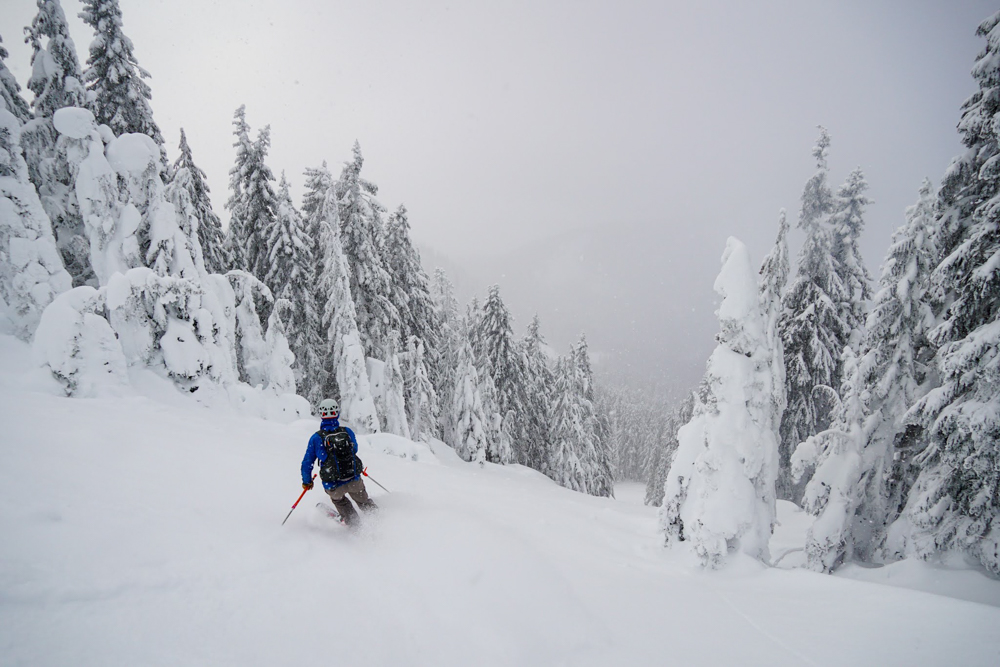
Shop Liberty Skis Origin 106 BC on Outdoor Prolink. Not a member? Apply today!
About the Gear Tester
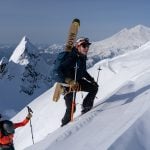
Sam Chaneles
Sam Chaneles is an avid mountaineer and backpacker, climbing peaks in the Cascades, Mexico, Ecuador, and Africa, as well as hiking the John Muir Trail and off-trail routes in Colorado. He has climbed peaks such as Aconcagua, Mt. Rainier, Cotopaxi, Chimborazo, Kilimanjaro, and many more. Sam graduated with a B.S. in Mechanical Engineering from Georgia Tech. During his time there he was a Trip and Expedition Leader for the school’s Outdoor Recreation program (ORGT). He has led expeditions to New Zealand, Alaska, Corsica, France, and throughout the United States. Sam is based in Issaquah, WA just outside of the Cascade Mountains. You can follow Sam and his adventures on Instagram at @samchaneles, or on his website at www.engineeredforadventure.com.

